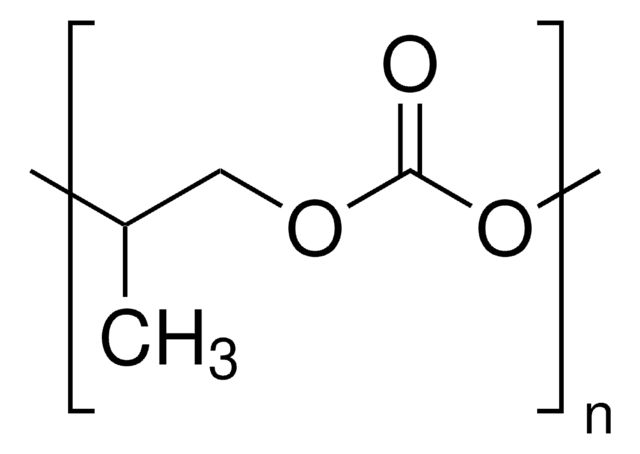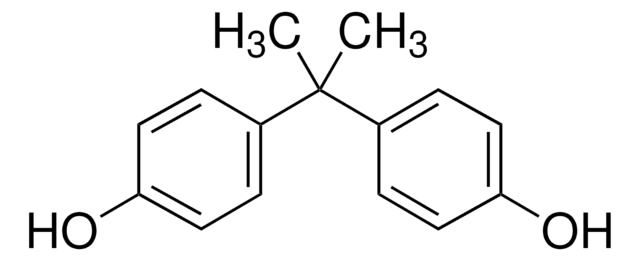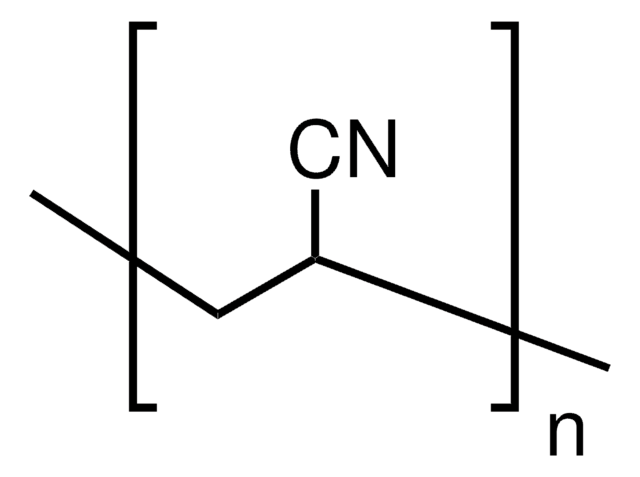Wichtige Dokumente
181625
Poly(Bisphenol A-Carbonat)
average Mw ~45,000 by GPC
Synonym(e):
4,4′-Dihydroxydiphenyl-2,2-propane carbonate polymer, Bisphenol A carbonate homopolymer, Carbonic acid-4,4′-dihydroxydiphenyl-2,2-propane copolymer, Poly(dian carbonate), Poly[2,2-bis(4-hydroxyphenyl)propane carbonate]
About This Item
Empfohlene Produkte
Mol-Gew.
average Mw ~45,000 by GPC
Qualitätsniveau
Brechungsindex
n20/D 1.585
Übergangstemp.
Tg 150 °C
Tm 267 °C
Dichte
1.2 g/mL at 25 °C (lit.)
SMILES String
CC(C)(c1ccc(O)cc1)c2ccc(O)cc2
InChI
1S/C15H16O2.CH2O3/c1-15(2,11-3-7-13(16)8-4-11)12-5-9-14(17)10-6-12;2-1(3)4/h3-10,16-17H,1-2H3;(H2,2,3,4)
InChIKey
XSXWYGABGYBZRM-UHFFFAOYSA-N
Angaben zum Gen
mouse ... Esr1(13982)
rat ... Ar(24208)
Suchen Sie nach ähnlichen Produkten? Aufrufen Leitfaden zum Produktvergleich
Verwandte Kategorien
Allgemeine Beschreibung
Anwendung
- To prepare transparent nanocomposites for optical applications.
- To study the wettability of graphene.
Lagerklassenschlüssel
11 - Combustible Solids
WGK
WGK 3
Flammpunkt (°F)
Not applicable
Flammpunkt (°C)
Not applicable
Persönliche Schutzausrüstung
Eyeshields, Gloves, type N95 (US)
Hier finden Sie alle aktuellen Versionen:
Besitzen Sie dieses Produkt bereits?
In der Dokumentenbibliothek finden Sie die Dokumentation zu den Produkten, die Sie kürzlich erworben haben.
Kunden haben sich ebenfalls angesehen
Unser Team von Wissenschaftlern verfügt über Erfahrung in allen Forschungsbereichen einschließlich Life Science, Materialwissenschaften, chemischer Synthese, Chromatographie, Analytik und vielen mehr..
Setzen Sie sich mit dem technischen Dienst in Verbindung.










